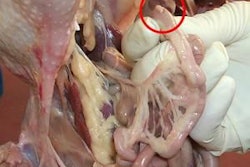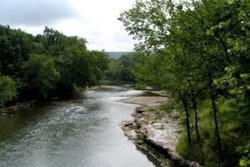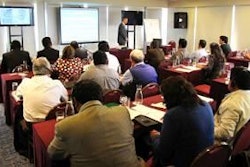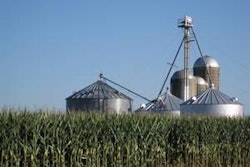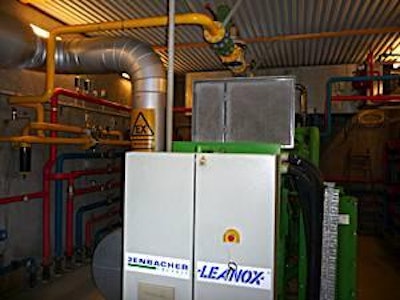
Two Danish pig farmers have developed an innovative way to link into renewable energy which allows them the benefits of anaerobic digestion (AD), without having to worry about the day-to-day running of the AD plant.
Anders Bundgaard and his son Michael, who farm in the north of Jutland in Denmark have rented out a small area of their 1,562 hectare estate to Ulsted Biogas, which takes all the slurry from their farm and four others in the area to provide the basic feedstock for its anaerobic digester.
The biogas company also imports food waste from nearby Norway to add the necessary protein and fats to the slurry to optimise gas production.
Powering the national grid
All the electricity generated from the plant is sold to the national grid. Heat from the process is piped back to the farms, where it is used to keep pig buildings warm during the winter and dry grain harvested in the summer.
Allan Flarup, who manages the small biogas station on the Klitgaard estate, said that food waste was used for pig swill feeding, before the practice was banned after the BSE scare.
“It is very good for biogas production, as it contains a lot of fiber,” says Flarup.
Two tanks, one inside the other
According to Flarup, the AD plant consists of two tanks, one inside the other. The outer tank is the holding one, while the digester itself is in the middle – and he is, in fact, obtaining biogas from both sections. This allows him to generate 2,200kW hours per year for the national grid.
“We top up the digester four times a day, using a total of 60 cubic meters of slurry and 20 cubic meters of food waste every day,” says Flarup. “The pigs are all kept on slats, so the DMC of the slurry is about 6%; after the anaerobic digestion process, the DMC is between 1-2%.”
Flarup said that the slurry/food waste mixture is pumped into the central tank, where it is mixed continuously for 15 days, before it is moved into the secondary outer tank, where it is kept for another 13 days.
It continues to produce gas (about 20% of the total output), but is mixed just twice a day, before some of it is pumped away to storage tanks round the farm (the rest is transported in tankers) before it is spread on the fields in the spring.
The type of pumps and mixers used by Ulsted Biogas provided by Landia A/S, which is based in Denmark and has subsidiaries in the UK, Germany and the USA, played a crucial role in the success of the operation, said Flarup, because they included ones with an extended knife system that ensured all the waste was minced up properly to ensure a continuous smooth flow.
When asked how profitable the operation is, Flarup smiles and says “there is room for improvement.”
Key advantages
However, he was keen to stress the advantages of turning the farm waste and Norwegian food waste into useful energy. In addition, the process eliminates most of the bad odors usually associated with pig slurry, both during the AD process and when the digestate, considered by many to be a ‘superior” bio-fertilizer was spread on farmland.
The farmers seem very happy with the renewable energy operation, although they don’t actually make any money from it — except for the rent they receive for the premises because they supply the slurry for free.
It’s all working very well at the moment,” said Bundgaard senior, who is obviously very keen on renewable energy, because he has also erected five 1-mega-watt wind turbines on the estate to generate green electricity for the national grid.
Erecting wind turbines on farms in Denmark has become a popular pastime now that the Danish government has agreed to pay an enhanced rate for all electricity generated from renewable energy sources. However, Bundgaard points out that the price he is being paid (10 Danish cents per unit) is less than farmers receive for green power in neighboring Germany.

